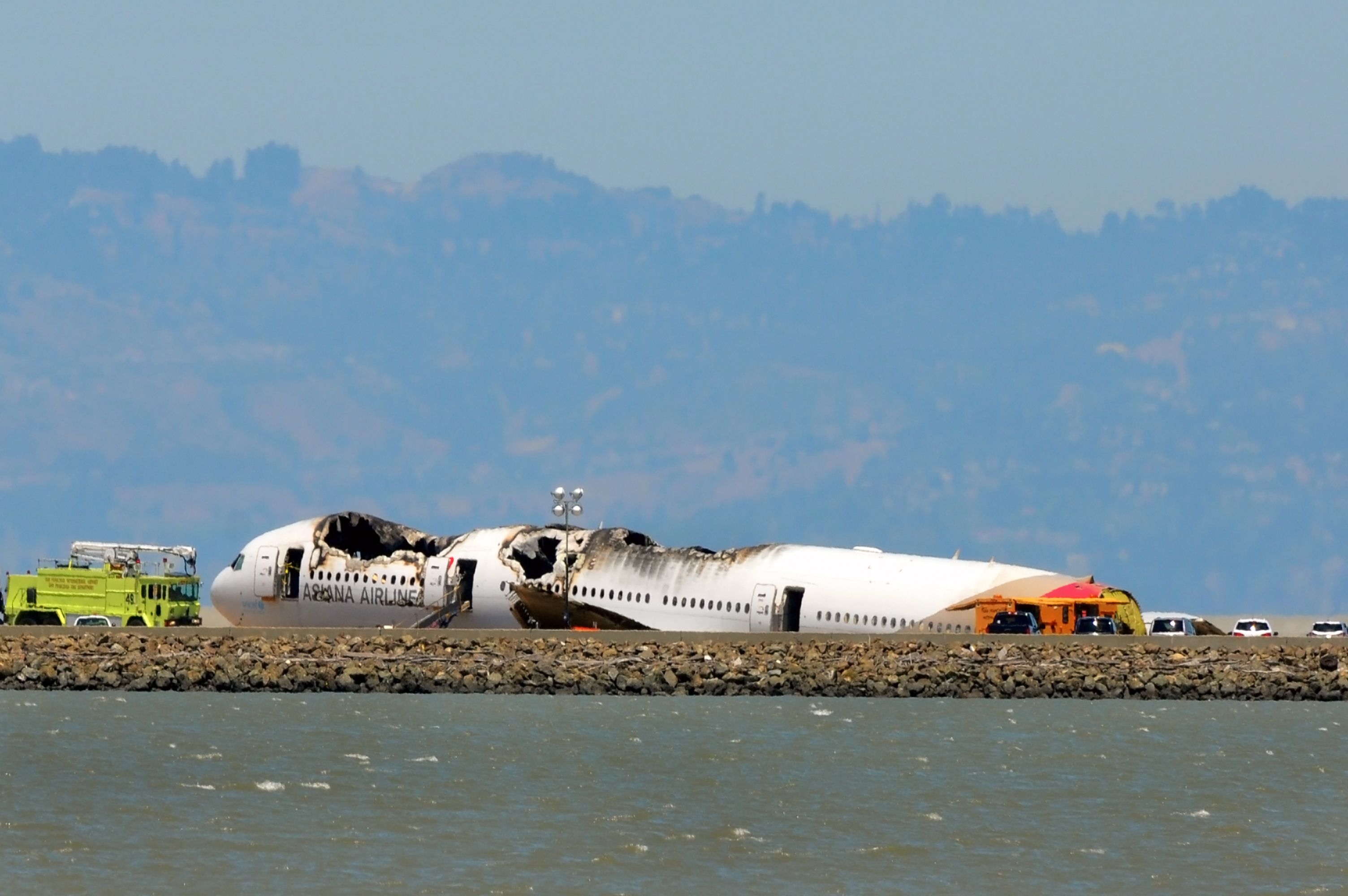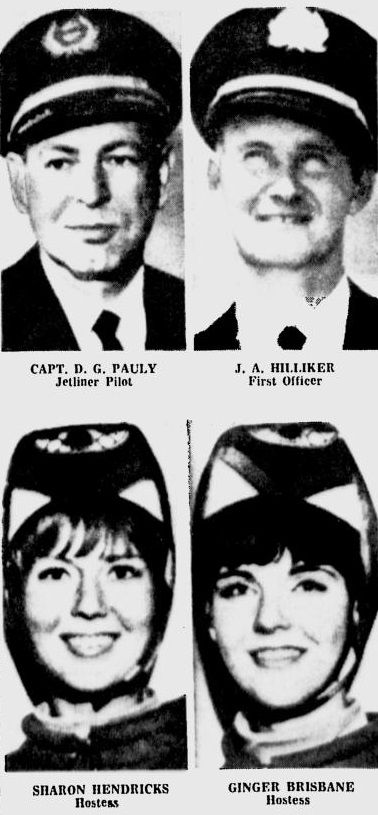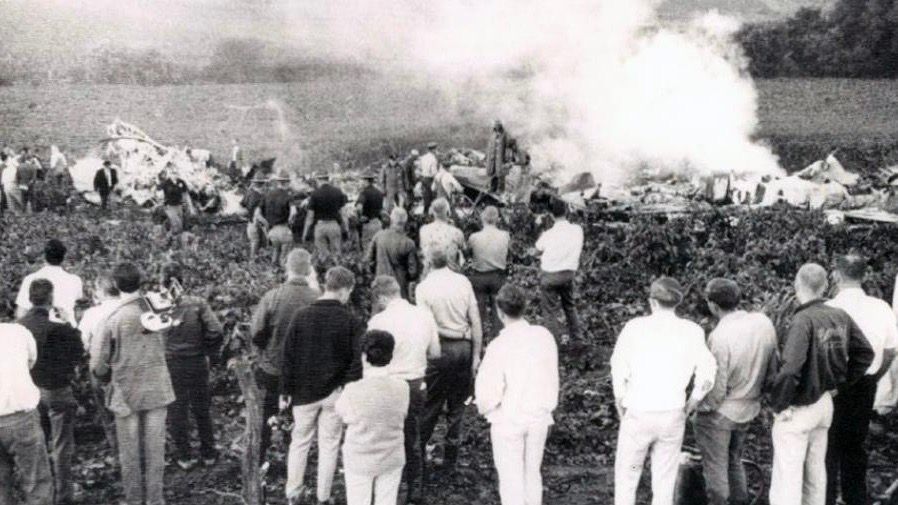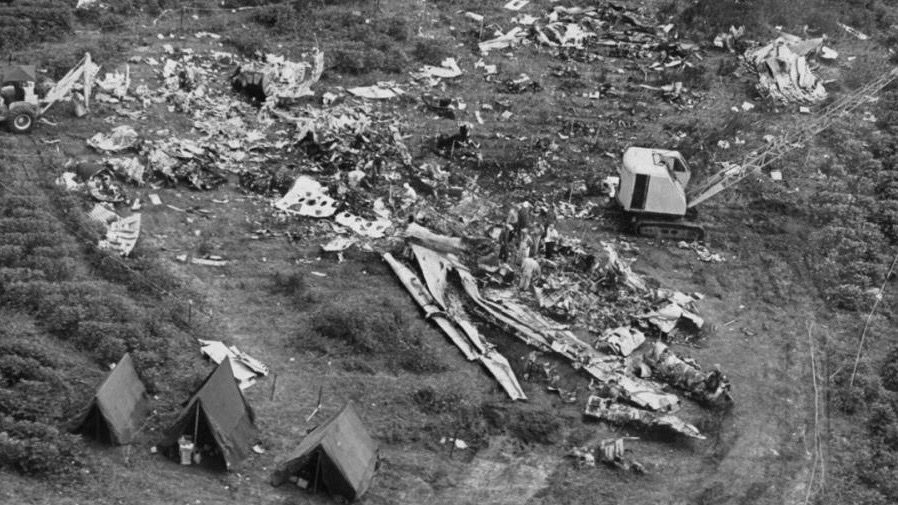Summary
- Flight 250 departed on schedule with 38 passengers, including Vietnam War veterans returning home.
- The captain chose to penetrate a storm instead of flying around it, resulting in inflight structural failure.
- The Cockpit Voice Recorder was critical in determining the cause – extreme turbulence in dangerous weather.
It was Saturday, August 6th, 1966. Braniff International Airways Flight 250 had a busy evening ahead. The BAC 1-11 registration N1553 had four crew onboard and passenger numbers would change en-route. The aircraft could take up to 68 passengers with 24 in first class.
The Captain had checked the weather in New Orleans and was told that a cold front was passing through the Dakotas into Nebraska, which could bring thunderstorms. Braniff and the captain did not show concerns about the weather at the start of the trip. The flight left New Orleans on schedule at 18:30 and was planned to land in Minneapolis at 02:00.
Sources for this article: The NTSB report, 3newsnow, Nebraska air crash, Associated Press, The Minneapolis Star, Lincoln Journal Star , Sarasota Herald Tribune, Deadly Turbulence: The Air Safety Lessons of Braniff 250 and other airliners by Steven Pollock. and Bureau of Aircraft Accident Archives.
The planned schedule of Flight 250
Flight 250 was operated by Braniff, between New Orleans, Louisiana and Minneapolis, Minnesota with stops at :
- Shreveport, Louisana
- Fort Smith, Arkansas
- Tulsa, Oklahoma
- Kansas City, Missouri
- Omaha, Nebraska
The flights between New Orleans and Kansas City had been normal and uneventful. The flight departed Kansas City at 22:55 with a planned cruising altitude of 20,000 feet. There were 38 passengers onboard, many of them military servicemen from the Vietnam War, flying home after completing their tour of duty.
The captain was Donald Pauly and the first officer was James Hilliker, both experienced crew with other 500 hours on the BAC-1-11. In the cabin were flight attendants Sharon Hendricks and Ginger Brisbane. One was seated at the front and one at the rear of the aircraft.
The flight attendant backstory
Sharon had previously worked as a telephone operator. Her family were happy for her to escape the small town of Sawyer, North Dakota. When she got a job as a flight attendant, they were even more so.
“It was quite the status, we weren’t well off and this was pretty special.”
Sharon’s brother as told to The Minneapolis Star.
The fatal trip was just three days after her 21st birthday. She was best friends with Ginger and they often flew together. They had met whilst they were based in Dallas during training school and shared a room. They both asked to be transferred to Twin Cities and had just moved there into a new apartment.
They had just got new uniforms, the Pucci design with a bubble ‘hat’ that protected their coiffed hair and make-up when it rained. The Braniff team was small, everyone knew each other and friends would often fly together. Sharon’s boyfriend had been killed in the Vietnam War and Ginger’s was reported ‘missing in action’. They were a comfort to each other. Their friend Mary had started training school the week before them and just the week before Ginger had been on vacation with her. Mary had left Ginger a note in her mailbox that night, one that she would never receive.
Ginger, now 21, decided she wanted to be a flight attendant at a young age, after her very first flight at junior school. Later she went to college to study education but then applied to Braniff. She loved her job, her colleagues and to travel. She’d been with the company for 10 months.
“She really enjoyed that trip. The stewardess took her and the other girls through the galley and showed them things.”
Ginger’s mother as told to The Minneapolis Star
What happened next?
The captain expressed his concerns about the weather to another pilot, whilst on the ground. There was a restriction at 5,000 feet, due to conflicting traffic and air traffic control (ATC) was transferred to the Kansas City ATC. The flight was cleared to ascend to 20,000 feet. There were some discussions between ATC and the captain regarding the weather and they asked to maintain 5,000 feet and deviate left to avoid the storm.
They stayed at 6,000 feet until they were advised that they could descend. At 23:02, the first officer said “It’s getting a little rough.” At 23:03, ATC gave permission for the aircraft to deviate left of course. ATC was transferred to Chicago ATC and flight 250 was advised of another aircraft, flight 255 in the area and they exchanged weather information, saying that they were at 17,000 feet and that there was moderate turbulence in the area. This was the aircraft’s last transmission at 23:08:30.
Witnesses reported seeing the aircraft approach a wall of clouds, preceding a line of thunderstorms. There was a wind shift and change in velocity at the time and moderate rainfall. The squall line had been reported by the Weather Bureau Aviation Severe Weather Bulletin, but Braniff forecasts had no mention of the severe weather and it was never mentioned by the dispatcher. Other Braniff aircraft in the area reported the squall line. Sheet lightning and funnel clouds in the area were also reported.
Flight 250 should have flown west around the storm and the first officer did suggest it. The captain attempted to penetrate the squall line using his radar system to find a ‘light’ area. The aircraft broke up just before the line in a rolling cloud.
The aftermath of flight 250
Flight 250 entered an updraft within an area of an active squall line of severe thunderstorms. The aircraft accelerated upwards and rolled to the left. Stall warnings and a rush of air were heard on the CVR. A fireball was seen rotating downwards from the low clouds. The aircraft impacted a soybean field, just outside of Falls City, Nebraska at 23:12. The right wing and empennage were separated, as was part of the tail and right stabilizer.
“My god, the world is on fire!”
“I went into the field only a little way. I was afraid there’d be other explosions. Then we called the sheriff’s office, fire department, ambulance and a priest. I haven’t been back in the field and I’m not going at least not for a while.”
Witnesses of the accident in their field as told to the Sarasota Herald Tribune.
The aircraft slammed into the muddy field at a vertical impact. The violence of the impact and explosion shook windows in local houses. The area was scattered with mangled and burned bodies, pillows and blankets all thrown from the aircraft. Locals rushed to the scene but the heat was too intense and there was thunder, lightning and driving rain. They would find no survivors. All 42 onboard had perished.
The captain was found still clutching the controls. The CVR was found battered but would be critical in finding out what happened. One of the flight attendants was recognized by her uniform and was described as “…lying there looking like she was asleep. Not a mark on her.” Braniff flew Sharon and Ginger, back home to their families.

Related
TransAsia Airways Flight 235 – A Cabin Crew Perspective
How did a turboprop airliner crash into a highway just minutes after takeoff?
The cause of the accident
There was no evidence of lightning strikes, hail damage or corrosion or metal fatigue.
This was one of the first times that the Cockpit Voice Recorder (CVR) was used in an investigation and had only recently been fitted in some aircraft.

Related
Revisiting Asiana Flight 214 – A Cabin Crew Perspective
The outstanding flight attendants’ actions amidst a horrific accident






